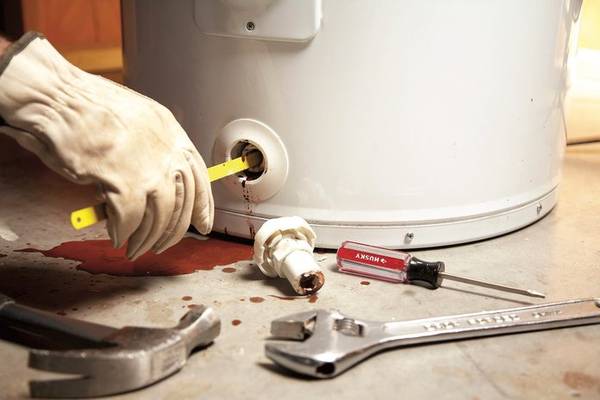
How To Remove Water Heater Element Without Element Wrench
It is not the end of the world. If you do not have an RV water heater element wrench, all is not lost. You can still remove the bad element by using other tools in your tool box. It just might take a little longer to do. However, it may also be easier to do as well.
The best way to handle this task is to use a socket wrench and socket. Since RV water heaters are in tight compact quarters, a socket wrench may be the best alternative. At least you can add extensions to get the room you need to work.
To learn more about this topic, just continue to read our article. It has the information you want to know about to do a great job.
How do You Remove a Hot Water Heater Element Without a Wrench?

This is not a hard task to do. The key is to make sure you do all the steps in order. Those steps help you prevent any mistakes from creating accidents. Your first step will be to shut off the water supply.
The second step will be to shut off the power supply to the water heater. You can interchange these two steps if you want as long as they are the first two steps taken.
The third step will be to get your socket set out and pick the 1 1/2 inch socket and enough extensions to give you a clear working room. Then remove the element like you would any nut or bolt.
This is the simplest and easiest method to use. You may also need a screwdriver to remove the access panel. This is a perfect task for the home handyman.
What Can I Use Instead of An Element Wrench?

The socket and socket wrench are the best options but you can use a different tool if you have the room or do not own the right sized socket or set. The problem is that RV elements are made to be very tight so the following alternatives may not work that well.
One option would be to use vice grips but most plumbers tend to not use this option due to the tightness factor of the element. But if you are stuck, try this option to see if it works for you.
Another option would be the crescent wrench. However, you may not have room to insert the wrench correctly and be able to turn it. You can use this if you remove the entire water heater from its location.
Or you can use a pair of pliers or an adjustable wrench but the same drawbacks apply here as well. One expert said that a breaker bar or tire iron could loosen the element.
This is a possibility as these should be large enough to fit over the element head and give you the space to turn them.
How To Remove Water Heater Element Without Element Wrench

The process is the same as using an element wrench or socket. Place the alternative over the head of the element and turn to the left. That direction will loosen the element to the point where you can use your fingers to twist the element out.
This is the biggest step. You do not have to use the alternative tools for very long. You just need to break the seal and make it loose enough for your fingers. Once you break that seal, the element should spin out as easily as a loose screw or bolt would.
How do I Loosen a Stuck Water Heater Element?

There are lots of good commercial products on sale at hardware stores everywhere or in hardware departments. Most of them do a great job in loosening up rusted or too tight element threads.
One product that comes to mind would be WD-40 and another would be penetrating oil. Both of these products get deep into those threads to loosen the grip of the rust or whatever is holding the element in place.
Some owners have used vinegar and water mixture to do the same thing. If you do not have these items on hand or are not near a store, you can go with a breaker bar.
These tools provide the leverage you need to break that seal. However, the drawback is you may push too hard on the bar and break the element before it gets loose. You have to be very careful when using this top tool.
How do I Remove a Corroded Water Heater Element?

In doing this task and any other task mentioned in this article, make sure to drain the water heater before starting work on the element. When it comes to a corroded element, the solutions are the same as above.
There are a limited number of tools you can use in this situation and they work for a variety of similar tasks. When you use the vinegar and water solution, use a toothbrush and be generous on application.
Once you have applied the mixture, wait about 20 minutes for it to work. When that time frame is over, use your element wrench, socket set, or other tools to break the seal and get that bad element out.
Using a penetrating oil or lubricant like WD-40 will be just as good as vinegar and water.
Some Final Words
You do not need an element tool to effectively and safely remove an RV water heater element. It is the right tool for the job but there are alternatives that work just as well.
The key is not to apply too much force as the element is not the strongest part in the world. Apply the right pressure to make sure you break the seal and then use your fingers the rest of the way. Fingers can get into tight spots easier than tools can.

